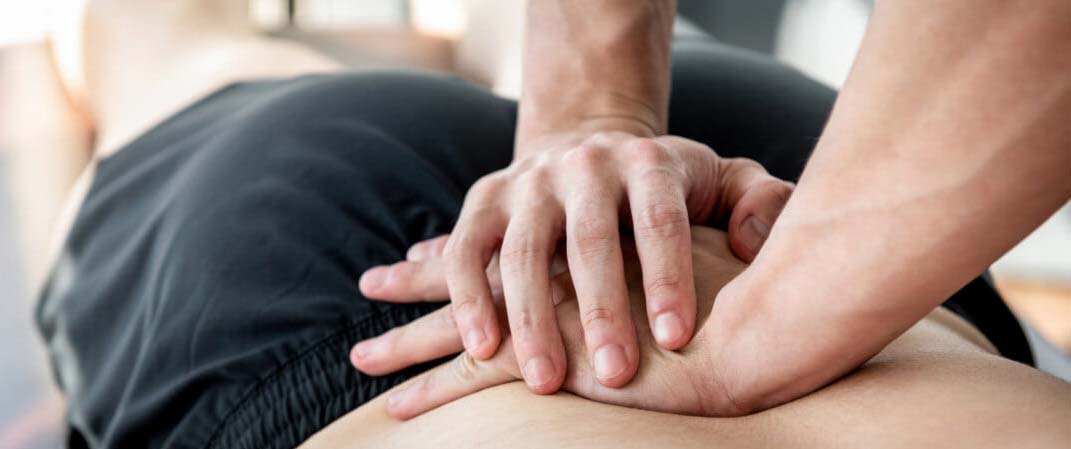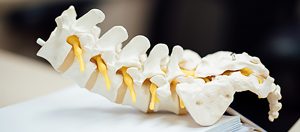Osteopathy is the ideal therapy to relieve back pain and all tensions in the body. Osteopathy can also be very effective in prevention, during pregnancy or to relieve your body after exercise. But the best about osteopathy is …
that it is a natual technique which help the body to heal by itself.
At London Home Visit Physiotherapy, we have a team of highly qualified osteopaths in London. Each of our osteopaths have their own specialty in order to deliver to our patient the best treatment possible at home or in one of our 3 Osteopathy Clinics in London, Belgravia, Clapham, and Monument.
To Book an osteo in London, Call 02071250262 , 07824553765 or Simply book your osteopathy session online by Clicking here: BOOK OSTEO ONLINE
The Osteopath
What is the role of the osteopath and when to consult them?
For an osteopath, the body is composed of different parts connected to each other. Thus, physical or psychological imbalance can have resonances throughout the whole body. Poor posture, a history of trauma, or stress do not disturb a single system (musculoskeletal, digestive, neurological, vascular, hormonal, etc.), but the whole body. The role of an osteopath is to treat each problem by restoring harmony in the musculoskeletal system and in each one of the other systems.
In the language of osteopaths, this harmony is often expressed by the terms ‘mobility and motility’ – motility designating all the movements specific to an organ or system.
A healthy body would have excellent motility, not only in its joints but in all body tissues:
- bone;
- muscles;
- nerves;
- ligaments;
- tendons;
- fascias;
- liquids.
One of the distinctive features of osteopathy is that it considers the whole-body structure and all its movements, whether they are large and powerful or just barely perceptible fluctuations.
What is osteopathy?
Osteopathy, known as “manual therapy”, is an “alternative” therapy. Osteopaths, after observing your posture, use a fine palpation to detect tension or imbalance that cause pain or discomfort, then make manipulations to restore balance. According to them, osteopathy is a comprehensive therapy with its own modes of “diagnosis” and treatment. It would treat a wide variety of conditions.
The osteopath can treat far more than musculoskeletal pain!
Osteopathy can also treat other system disorders:
- cardiovascular;
- digestive;
- genitourinary;
- neurological;
- ear, nose and throat;
- pulmonary.
A broad field of action that makes the practice of osteopathy a truly interesting option for both acute and chronic pain.
Basic principles of osteopathy
In osteopathy, there are 4 principles:
- Globality
The human body is a functional unit made up of different parts. A condition in one part of the body influences others. This is why the osteopath sometimes manipulates areas far from your primary pain (on the diaphragm to relieve the back, for example).
- The structure
It governs function, that is, the various body functions interact with the structure of the musculoskeletal system.
- Homeostasis
The third and fourth principles concern more the preventive aspect of osteopathy: homeostasis. The body would have the capacity to self-regulate itself and thus be able to regain a dynamic that would keep the pain away.
Together with good arterial vascularization preventing any congestions, the body would possess all the cards to cure itself or at least limit the ailments.
“To be healthy is to fall ill and get up from it,” said Canguilhem (physician and philosopher of the 19th century).
The Osteopath treats the patient’s body as a whole and not only the pain
The osteopath is not only concerned with a painful symptom but considers the patient to be evaluated as a whole. They need to find out exactly where the tensions and blockages that restrict the mobility of different tissues are coming from.
What are osteopaths trained for?
- Osteopaths are trained to develop their touch and knowledge about the body
- Osteopaths are trained at length to acquire a deep knowledge of body structures (bones, joints, organs, viscera, muscles, etc.).
- Osteopaths have a great sense of observation, as well as an extreme finesse of touch, allowing them to detect slight blockages or particularly subtle movements.
Osteopathy treats all the different body systems
Although the term osteopathy, with the Greek prefix “osteo” meaning “bone”, may suggest that osteopath is exclusively concerned with bone, this discipline also concerns muscles, viscera and aponeurosis.
The Benefits of Osteopathy
Osteopathy in treatment
Osteopathy is first recognized for its ability to relieve diseases and disorders of the musculoskeletal system, of which back pain takes a large part.
According to research over 3,000 osteopaths, more than most of their treatments are both:
- acute problems such as sprains, sports injuries;
- chronic problems such as herniated disks, low back
- pain, joint pain, perinatal pain, scoliosis and tendinitis.
- Plantar fascists, Lenoir’s spine, musculoskeletal disorders (MSDs) through work postures (e.g. computer investigation work), and carpal tunnel syndrome are also treated with osteopaths.
According to practitioners, the osteopath would also be able to intervene on several other systems, which would allow it to relieve or treat the following conditions:
- circulatory disorders of the limbs, hemorrhoids, veinous congestion, palpitations, etc. ;
- flatulence, constipation, gastric acidity, hepatobiliary disorders, etc. ;
- gynecological pain and dysfunction, cystitis, functional sterility, enuresis, etc. ;
- asthma, otitis media (manipulation would drain themiddle ear), rhinitis, sinusitis, dizziness, migraines, buzzing, etc. ;
- accompanying depressive states, stress, anxiety, certain sleep disorders, etc.
Osteopathy in prevention
Osteopath for pregnant women
In recent years, there has been an increasing emphasis on prevention, particularly during pregnancy. Osteopathy could treat some of the functional problems of pregnancy, such as joint pain, back pain, and digestion problems.
To facilitate the work of the pregnant woman, the osteopath can also check the mobility of the pelvis and their vertebral axis.
Osteopath for newborns: Cranial Osteopathy
Also in the context of prevention, it is recommended that newborns use an osteopath to perform an examination in the weeks following their birth.
Thanks to osteopathy, it is possible to avoid trauma, and rebalance tension in the baby’s body by listening to the unsynchronized movement of the baby’s skull, which affects the mobility of the junctions of the skull bones and causes subsequent functional disorders.
Osteopathy to relieve back pain
Osteopathy helps to relieve back pain, especially lower back pain. Numerous articles, including some systematic reviews, have been published on the relief of back pain, particularly low back pain, using osteopathy.
A systematic review and meta-analysis of randomized clinical trials concluded that this approach reduces pain more effectively than placebo treatment. In addition, several studies were reported in which osteopathy was more effective than conventional treatments.
Moreover, it appears that this effect would be beneficial in the short and medium-term (the effects lasted beyond 3 months).
Osteopathy to reduce the use of painkillers
Studies show that the reduction in pain would be comparable to that obtained with certain non-steroidal anti-inflammatory drugs (NSAIDs), without the side effects associated with them. Osteopathy may therefore be a strong alternative to medication for people with acute back pain, and possibly for chronic pain.
Studies on Osteopathy to relieve neck pain
Some studies report positive effects of osteopathy in the relief of acute or chronic pain. Results from a randomized clinical trial of 58 patients with neck pain in less than 3 weeks indicate that this approach may be as effective as a recognized analgesic for treating acute musculoskeletal pain. Another clinical study evaluated chronic neck pain in 41 patients. A decrease in pain intensity was observed in the osteopathic group compared to the placebo group after 10 weeks of treatment. The authors note that these changes had a positive effect on the quality of life of participants.
Osteopathy to recover mobility after surgery
Surgical scars can sometimes create adhesions that cause pain that the osteopath would be able to relieve.
For example, patients with breast cancer surgery are patients with limited shoulder mobility, often due to scaring. After osteopathic manipulations, the scar usually becomes more mobile and so does the shoulder of the patient.
Can osteopath Relieve migraines? Osteopathy on the cephalic sphere and ENT
Osteopathy relieves some headaches due to blockages in the neck and stiffness of the aponeurosis of the skull. Results appear to be present in some cases of dizziness and tinnitus (excluding tumor and tumor damage).
Digestive & Visceral osteopathy, osteopath for the intestinal sphere
Osteopathy can act in the case of functional disorders of the intestine, for example, in the case of irritable bowel syndrome, constipation or bloating.
Osteopathy of the pelvic floor, osteopath for the pelvic sphere
With specific manipulation, the osteopath can also reduce the tensions of the pelvic area and so reduce pain or disagreement whether in everyday life or during sexual intercourse.
Osteopath qualifications
The osteopath may be an Osteopath D.O (Graduate in Osteopathy) exclusively, or may be a medical graduate. They must be in a school whose training is recognized by the Ministry of Health.
What is the primary quality of a good osteopath?
The primary quality of an osteopath must be listening. It must be attentive to your pain, and adapt to your condition. His palpation must be fine and soft.
Is osteopathy regulated?
In UK osteopathy is actually regulated by the Gosc
Osteopathy was conceptualized in the United States in 1873 by Andrew Taylor Still (former Methodist physician). Arriving in Europe in 1917, it was recognized by Great Britain in 1993. Belgium will follow the march in 1999.
In France, it was first through doctors and physiotherapists during XX century, who then exercised it. After legal disputes and debates, the title of osteopath was awarded in 2002. The decrees governing the practice were promulgated in March 2007.
How to become an osteopath?
In France, to practice osteopathy, you must have a D.O. (diploma of osteopath), obtained after 5 years of compulsory studies. There are also physiotherapists and doctors trained in osteopathy. There are 31 osteopathy schools (26 in initial training, and 5 in continuous training for health professionals). The latter are managed by the 2014 decrees and the last approvals issued by the Ministry of Health were published in 2015. Decrees No. 2014-1505 of 12 December 2014 on osteopathy training require a 5-year course divided into 4,860 hours of training covering 7 main fields of education. The fields are diverse and varied (anatomy and physiology, medical semiology…). In addition, 1,500 hours of practice are required. All schools must practice the same mode of teaching, the D.O becoming quality and supervised diploma.
How do osteopaths work?
The manipulations done by the osteo, with the help of the subject, are made to mobilize the tissues (joints, muscles, membranes, liquids, etc.) and to induce a state of relaxation, to allow the self-correction of a lesion (term for a loss of mobility/motility).
The osteopath will use different types of manipulations.
Osteopathic Manipulation of the Structure
The manipulations on the joints have a certain impulse on a structure. Manipulations of the structures are not painful but you can hear a crack (release of a bubble of air that was trapped in the joint).
Visceral Osteopathy
Visceral manipulations aim to restore maximum motility to the viscera (intestine, liver, spleen, lung, etc.). This is related to some functional disorders.
Cranial Osteopathy
Skull manipulation is very subtle and looks like a simple imposition of hands. In reality, it is a very delicate mobilisation to give back the mobility of the skull bones and act on the movement. These manipulations started at the beginning of the XX century by the American osteopath William G. Sutherland.
Conduct of an osteopathy session
- Osteopaths tailor their sessions according to each patient. In order to determine the type of pain, its location, and its frequency, the osteopath makes an anamnesis by asking you questions.
- Then they go on with an underwear observation to understand your posture.
- By mobility/motility tests, the osteopath locates the areas of “lesions” and by palpation and determines the tissue quality (heat, induration skin).
- Once the origin of the pain is determined, they proceed to treatment. The treatments will not be the same for a child or a sportsman, a person with anxiety or an accident, etc.
- An osteopathy session usually lasts 30, 45 or 60 minutes.
- Depending on the case, the subject remains dressed or in underwear. They can lie (back, belly, side), sit or stand, sometimes in unusual postures.
- They may feel “twisted in all directions” or, on the contrary, hardly feel the practitioner’s slow and small-amplitude movements.
How often shall I consult an osteopath?
On average, treatment may require several sessions (2-3) spaced 1-3 weeks apart. Sometimes one consultation is enough and sometimes more.
What will I feel after a session with an osteopath?
After the consultation, it is not uncommon to experience stiffness or a slight increase of pain while the body rebalances itself. But after a day, you will feel relief.
Depending on your goal, the osteopath might give you exercises to continue at home.
Are there any side effects of osteopathy?
No, osteopathy done by a professional doesn’t have any negative side effects as the osteopath simply rebalances the different structures and tensions of the body.
What are the contraindications for osteopathy?
Although it has a wide scope of action, there are nonetheless contraindications to osteopathy.
Osteopathy Contraindications
If you have any infectious disease, fever, inflammation outbreak, any benign or malignant tumor process, or if you have a neurological disease.
Relative Contraindications
Osteopathy is also none advisable if you have an inguinal or crura hernias, or a herniated disk.
Osteopathy is becoming more popular in prevention and treatment
Osteopathy is becoming more common among patients. 48% of the French population have ever used an osteopath.
It is advisable to consult at least once a year to prevent possible pain. If you have an intensive sporting activity, or if you practice a physical profession, it can be interesting to come at least twice a year.
At London Home Visit Physiotherapy, we have a team of highly qualified osteopaths in London. Each of our osteopaths have their own specialty in order to deliver to our patient the best treatment possible at home or in one of our 3 Osteopathy Clinics in London, Belgravia, Clapham, and Monument.
To Book an osteo in London, Call 02071250262 , 07824553765 or Simply book your osteopathy session online by Clicking here: BOOK OSTEO ONLINE





